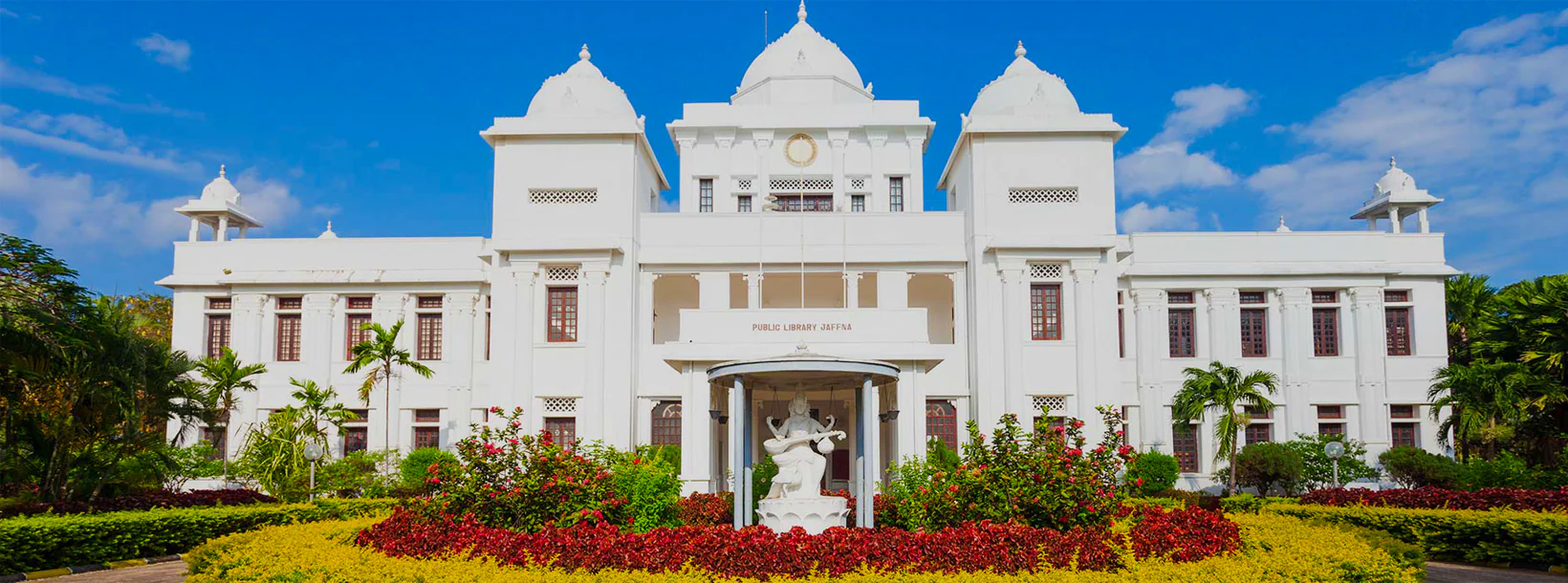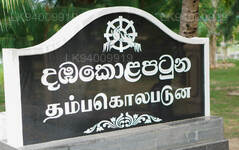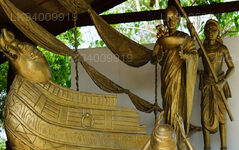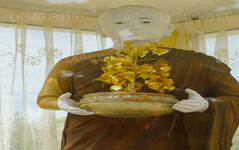
Jaffna City
Jaffna is the main city of Jaffna peninsula in the northernmost district of Sri Lanka. Comfortable intercity busses from Colombo take 10-12 hours to reach the city of Jaffna.
Dambakola Patuna
Der Hafen von Jambukola oder Dambakola Patuna ist ein alter Hafen nördlich von Jaffna in der Nordprovinz Sri Lankas.
Nachdem Mihindu Maha Thero im Jahr 150 v. Chr. den Buddhismus nach Sri Lanka gebracht hatte, kam seine Schwester Theri Sanghamitta ein Jahr später mit einem heiligen Bo-Setzling in diesem Hafen nach Sri Lanka. Der Tempel Samudda-panasala (Jambukola Viharaya) wurde zum Gedenken an die Ankunft des Bo-Schösslings von König Devanampiya Tissa (150–210 v. Chr.) erbaut. Später pflanzte derselbe König einen der ersten acht Triebe des Sri Maha Bodhi an derselben Stelle, an der er den ursprünglichen Baum aufbewahrte, bevor er ihn nach Anuradhapura brachte. König Vijayabahu I. (1070–1110) hat diese Stätte restauriert. Die Überreste des Vihara, wie der Buddha-Fußabdruckstein und das Vatadage, die bis vor Kurzem zu sehen waren, existieren dort nicht mehr.
Dieser Hafen verlor allmählich an Bedeutung, während sich der Hafen Mahathiththa/Mahatota/Mantota (heute Mantai) an der Mündung des Malvatu Oya zu einem wichtigen Knotenpunkt der Seewege entwickelte und der Dambakola Patuna Viharaya mit der Zeit verloren ging. Die Große Chronik von Sri Lanka, Mahavamsa und Samanthapapaasasdika erwähnen Pilger, die in der Antike aus dem „Yonaka“-Land nach Jambukola kamen, um das Jambukola Viharaya zu verehren.
Gegenwärtig
Leider gibt es heute am Tempel nichts mehr, was auf ein Alter schließen lässt. Die meisten Bauwerke im Tempel, einschließlich der Stupa, die in einer Rekordzeit von 65 Tagen fertiggestellt wurde, wurden von der srilankischen Marine errichtet. Sogar der aktuelle Bo-Baum wurde 1998 von der Marine gepflanzt.
About Jaffna District
Jaffna is the capital city of the Northern Province, Sri Lanka. 85% of the populations of the Jaffna and Kilinochchi districts are Hindus. The Hindus follow the Saivite tradition. The remainders are largely Roman Catholics or Protestants, some of whom are descendants of colonial settlers, known as Burghers. The Tamils are divided along caste lines, with the farmer-caste Vellalar forming the majority. Sea products, red onion, and tobacco are the main products in Jaffna.
Jaffna is home to beautiful Hindu temples. An Old Dutch Fort still stands well preserved within which is an old Church. Another example of Dutch architecture is the King's House. No visit to Jaffna is complete without tasting the exquisite Jaffna mango, reputed for its sweetness. About 3 km away is the majestic Nallur Kandaswamy Temple, home to the largest religious festival in Jaffna. The Kayts Harbour is an ancient ship docking site in the Jaffna region.
About Northern Province
The Northern Province is one of the 9 provinces of Sri Lanka. The provinces have existed since the 19th century but they didn't have any legal status until 1987 when the 13th Amendment to the 1978 Constitution of Sri Lanka established provincial councils. Between 1988 and 2006 the province was temporarily merged with the Eastern Province to form the North-East Province. The capital of the province is Jaffna.
Northern Province is located in the north of Sri Lanka and is just 22 miles (35 km) from India. The province is surrounded by the Gulf of Mannar and Palk Bay to the west, Palk Strait to the north, the Bay of Bengal to the east and the Eastern, North Central and North Western provinces to the south.The province has a number of lagoons, the largest being Jaffna Lagoon, Nanthi Kadal, Chundikkulam Lagoon, Vadamarachchi Lagoon, Uppu Aru Lagoon, Kokkilai lagoon, Nai Aru Lagoon and Chalai Lagoon.Most of the islands around Sri Lanka are to be found to the west of the Northern Province. The largest islands are: Kayts, Neduntivu, Karaitivu, Pungudutivu and Mandativu.
The Northern Province's population was 1,311,776 in 2007. The majority of the populations are Sri Lankan Tamils, with a minority Sri Lankan Moor and Sinhalese population. Sri Lankan Tamil is the major language spoken in the province by the vast majority of the population. The other language spoken is Sinhala by 1 percent of the population. English is widely spoken and understood in the cities.

















